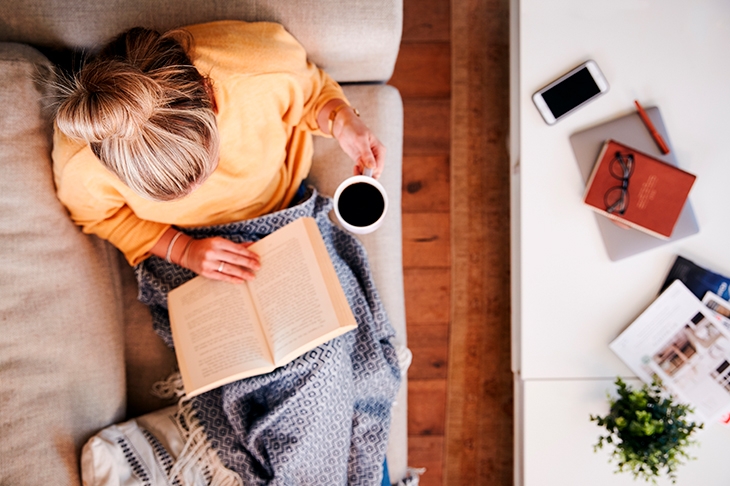At the Austrian embassy in Naples, a German diplomatist asked the great beauty Madame de Ventadour if she had been in the Strada Nuova that morning. ‘What else have we to do with our mornings, we women?’ replied Madame de Ventadour. ‘Our life is a lounge from the cradle to the grave.’
How true. The observation comes in Bulwer Lytton’s novel Ernest Maltravers (1837). I was put in mind of lounging by remarks that Anne McElvoy made on the wireless about the use of video-conferencing and broadcasting allowing people to attend to their visible top half while wearing lounge pants below.
I wasn’t too sure what lounge pants were. I don’t wear them and my husband certainly doesn’t. He lounges quite a bit and used to be found in lounge bars, when such things existed, but he wears flannel trousers in the house, or even what invitations call a lounge suit.
The Oxford English Dictionary says that lounge was a name for the drawing-room first used in the 1880s. Saloon was used from the 18th century, in great houses, as it still is. John Betjeman used lounge as a social marker in ‘How to get on in society’ (1954): ‘It’s ever so close in the lounge, dear.’ What would a U (upper class) rather than a Non-U speaker have said? ‘It’s stifling in the saloon’?
So what of these lounge pants? The non-essential shops being closed, I had a look at the Boohoo website to see what sweatshirts the sweatshops were producing. Its lounge pants are ‘made with sofa days in mind. Let’s face it, no one wants to lounge around the house in jeans, right?’ Right. ‘Our loungewear trousers are perfect for staying in, whether it’s super soft wide leg styles or basic lounge joggers.’ Joggers?
Joggers must be jogging bottoms. The intention seems to be to reach a state of utter comfort and relaxation by wearing clothes made for sport without taking exercise. I’ve seen people wearing lounge pants, I now realise, on trains and in shops when we had such things. These people don’t look like the photos online and should on no account allow the Zoom camera to catch their nether limbs in such clothes.






Comments